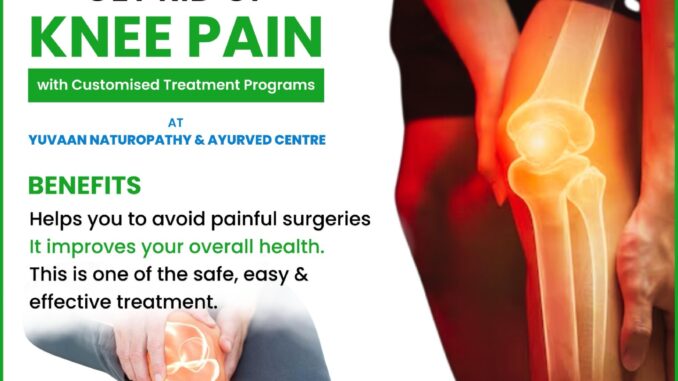
Knee Pain: Treatment and Preventive Care
Knee pain is a widespread issue that affects people of all ages, whether due to injury, overuse, or underlying medical conditions like arthritis. As one of the largest and most complex joints in the body, the knee plays a critical role in mobility, and any pain or discomfort can significantly affect one’s ability to perform everyday activities. Fortunately, there are several treatment options and preventive care strategies to manage knee pain effectively.
Causes of Knee Pain:
Knee pain can stem from various causes, including:
- Injury: Torn ligaments, meniscus tears, or fractures can lead to acute knee pain.
- Arthritis: Conditions such as osteoarthritis and rheumatoid arthritis result in chronic inflammation and pain in the knee joint.
- Overuse: Repetitive movements, especially in athletes or individuals who perform high-impact activities, can strain the knee joint, leading to pain and inflammation.
- Over Weight: Being overweight significantly increases pressure on the knee joints, leading to faster wear and tear of cartilage. This added strain can cause or worsen knee pain, particularly in conditions like osteoarthritis, and can hinder mobility and joint function.
- Age: With aging, the cartilage in the knee wears down, leading to conditions like osteoarthritis, which can cause pain and stiffness.
Treatment Options for Knee Pain:
Rest and Ice Therapy
For acute injuries, rest and ice can help reduce swelling and pain. Avoid activities that put stress on the knee and apply ice for 15-20 minutes several times a day to manage inflammation.Physical Therapy and Exercise
Engaging in physical therapy and targeted exercises can help strengthen the muscles around the knee, improving stability and reducing the risk of further injury. Stretching exercises can also improve flexibility and prevent stiffness.Medications
Over-the-counter pain relievers such as ibuprofen or acetaminophen can help manage pain and inflammation. For chronic conditions like arthritis, prescription medications may be necessary to control symptoms.Chiropractic and Alternative Therapies
Chiropractic care, acupuncture, and massage therapy are alternative treatments that may provide relief for individuals with knee pain. These therapies help in reducing inflammation, improving circulation, and promoting healing.Surgical Intervention
In severe cases, especially when the knee joint is damaged due to arthritis or injury, surgical procedures like knee replacement or arthroscopy may be required to restore mobility and relieve pain.- Naturopathy Treatment Naturopathy offers holistic treatments for knee pain, focusing on natural remedies like herbal supplements, anti-inflammatory diets, and therapies such as hydrotherapy and acupuncture. Physical therapies, including yoga and stretching exercises, improve joint flexibility and strength. Naturopathy emphasizes lifestyle changes, weight management, and stress reduction to promote healing, relieve pain, and prevent further damage to the knee joint.
Preventive Care for Knee Pain:
Maintain a Healthy Weight
Excess weight places additional strain on the knee joints, which can accelerate wear and tear. Maintaining a healthy weight can reduce pressure on the knees, lowering the risk of injury and pain.Exercise Regularly
Regular low-impact exercises such as swimming, cycling, and walking can strengthen the muscles around the knee and improve joint stability. Avoid high-impact activities that may cause stress on the knee joint.Wear Proper Footwear
Wearing supportive shoes with proper cushioning can help reduce stress on the knees. Avoid high heels or worn-out shoes that may affect posture and joint alignment.Warm-Up Before Physical Activity
Warming up before exercise or physical activity can reduce the risk of knee injuries. Gentle stretching helps improve flexibility and prepare the muscles for activity.
Conclusion:
Knee pain can be managed effectively with a combination of treatments, including rest, physical therapy, medications, and alternative therapies. Preventive care, such as maintaining a healthy weight, regular exercise, and wearing proper footwear, can help reduce the risk of knee pain in the long term. By taking proactive steps, you can protect your knees, improve mobility, and maintain an active lifestyle.




Be the first to comment